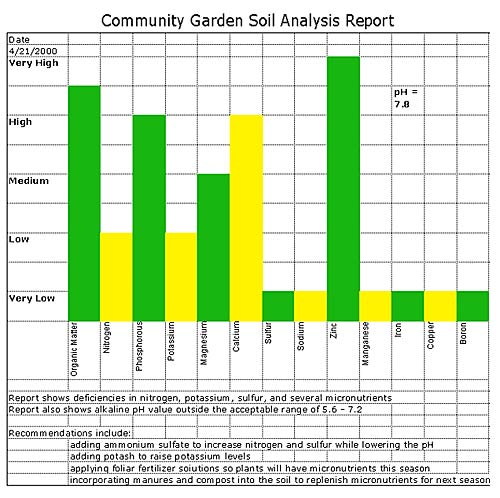A professional soil test can help you amend the soil with the necessary nutrients for the plants you'll be growing. The following chart was taken from a soil test report on my community garden in April of 2000.

The results are mixed. On the positive side, the heavy clay soil has adequate levels of phosphorous, calcium, and zinc. Also, there is a high level of organic matter because the space has been gardened (presumably composted and mulched) for over 30 years.
On the other hand, the primary nutrients nitrogen and potassium are low. The long history of gardening has depleted many of the secondary and micronutrients. And at 7.8, the pH is outside the acceptable range (5.2 to 7.6). These deficiencies were evident by the chlorotic (yellow) leaves on my witch hazel and the reduced tomato harvest in 1999.
To prepare the soil for the upcoming season, we added ammonium sulfate to increase nitrogen and sulfur. As an acidifier, ammonium sulfate also lowered the pH closer to the ideal of 6.5. We tilled potash into the soil to raise potassium levels.
Then we spread compost to supply the secondary and micronutrients. However, because it takes months for organic matter to break down, the plants would not have access to the micronutrients until the following year. So we sprayed fertilizer on the foliage to provide a quick shot of secondary nutrients and micronutrients.
After making these adjustments, the plants responded well with lush, productive growth. It was a banner year for our fuzzy, peach-colored, heirloom tomatoes and regent serviceberries.